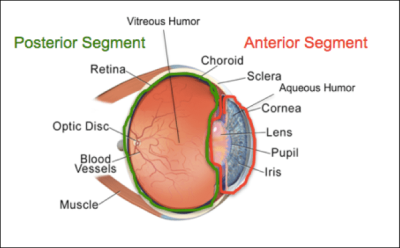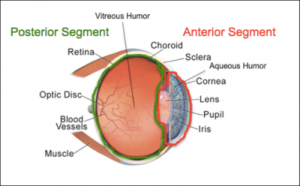Hello, and welcome to part 2 of my Cranial Nerve Series!
In the previous post, I introduced cranial nerves and discussed the basics of CN I-III. Ready for IV-VI? Let’s get started!
CN IV: Trochlear
CN V: Trigeminal
While CN IV was short, sweet, and to the point, the trigeminal nerve is anything but! Trigeminal by definition means threefold, which speaks to the three primary divisions of the trigeminal nerve… which doesn’t sound bad, until you look at all the many subdivisions of these three. Think you’re ready? Hold onto your hats, and let’s give it a go!
Cranial nerve V is a mixed nerve, containing both sensory and motor components. For the sensory side, the trigeminal nerve conducts sensory signals via generals somatic afferent fibers from a number of smaller nerves that we’ll discuss further in a moment. On the motor side, the trigeminal innervates the muscles of mastication (chewing), as well as a few others that I’ll briefly cover. Due to the embryologic origins of these muscles, the signal is transmitted via special visceral efferent fibers.
Interestingly, rather than having a single nucleus like CN III and IV, the trigeminal nerve actually has four nuclei: three sensory (primary, spinal and mesencephalic) and one motor. These, essentially, end up passing through a majority of the brainstem, converging into the trigeminal ganglion near the petrous portion of the temporal bone.
From there, as previously mentioned, the trigeminal splits into three branches: the ophthalmic (V1), the maxillary (V2), and the mandibular (V3).
Ophthalmic
- Sensory nerve
- Further divides into:
- Lacrimal nerve (lacrimal gland/upper eyelid)
- Frontal nerve
- Supraorbital nerve (sensory from skin of lower forehead)
- Supratrochlear nerve (sensory from nose/upper eyelid)
- Nasociliary nerve
- Anterior ethmoid nerve (sensory from nasal cavity)
- Posterior ethmoid nerve (sensory from sinuses)
- Long/short ciliary nerves (sensory for eye)
- Infratrochlear nerve (sensory for conjunctiva and central upper eyelid)
- Sensory nerve
- Further divides into:
- Infraorbital nerve
- External nasal nerve(sensory for skin on side of nose)
- Internal nasal nerve(sensory to nasal septum)
- Superior labial nerve (sensory for upper lip)
- Inferior palpebral nerve (sensory for lower eyelid)
- Anterior superior alveolar nerve (sensory for teeth)
- Middle superior alveolar nerve (sensory for teeth)
- Meningeal nerve
- Pterygopalantine nerve
- Lateral superior posterior nasal (sensory for nose)
- Medial superior posterior nasal (sensory for nose)
- Nasopalatine
- Major palatine (sensory for palate)
- Minor palatine (sensory for palate)
- Zygomatic nerve
- Anterior zygomaticofacial nerve (sensory from far side of face)
- Posterior zygomaticotemporal nerve (sensory from far side of face)
Mandibular
- Sensory and motor nerve
- Sensory:
- Buccal nerve
- Inferior alveolar nerve
- Inferior dental plexus (sensory for teeth and gums)
- Mental nerve (sensory for teeth and gums)
- Lingual nerve (sensory for tongue and floor of mouth)
- Motor: (muscles of mastication)
- Mylohyoid
- Anterior belly of digastric
- Tensor palantini
- Masticatory muscles
- Tensory tympani
Phew! We made it!
CN VI: Abducens

